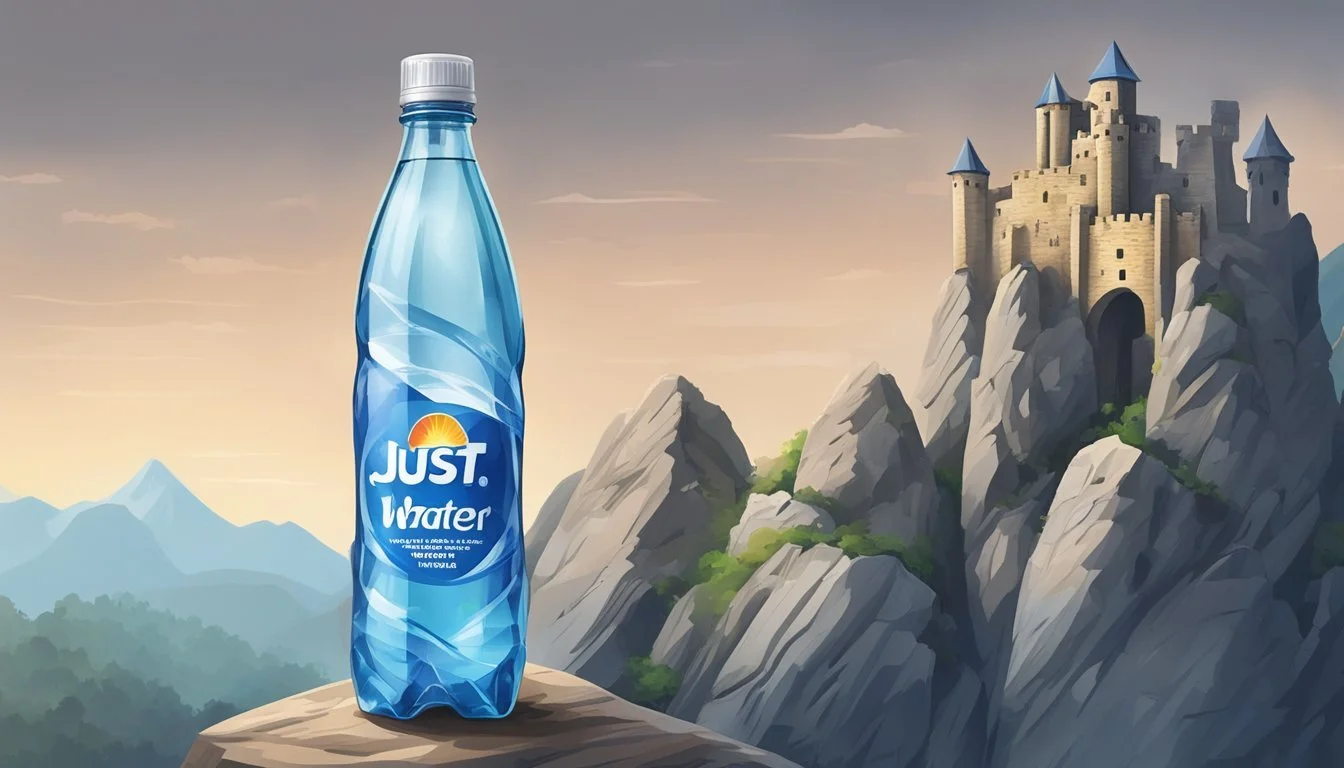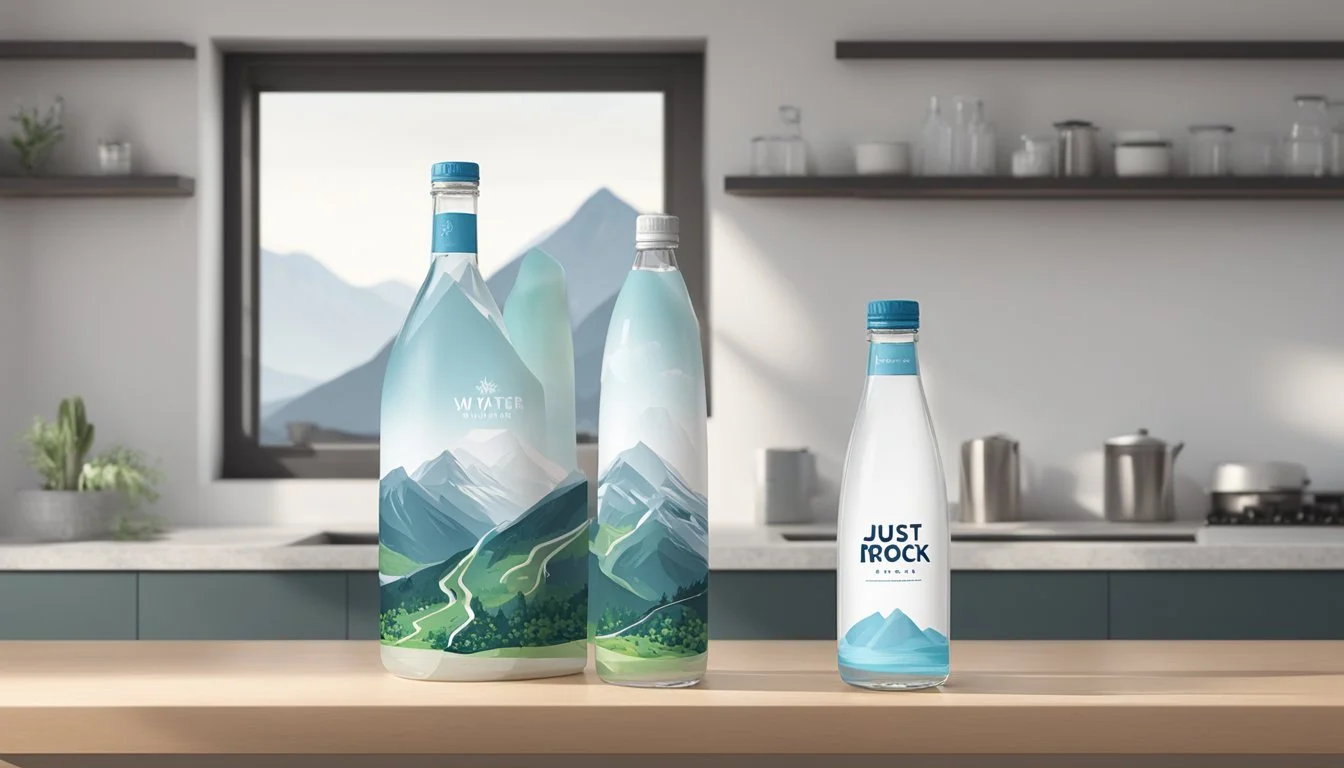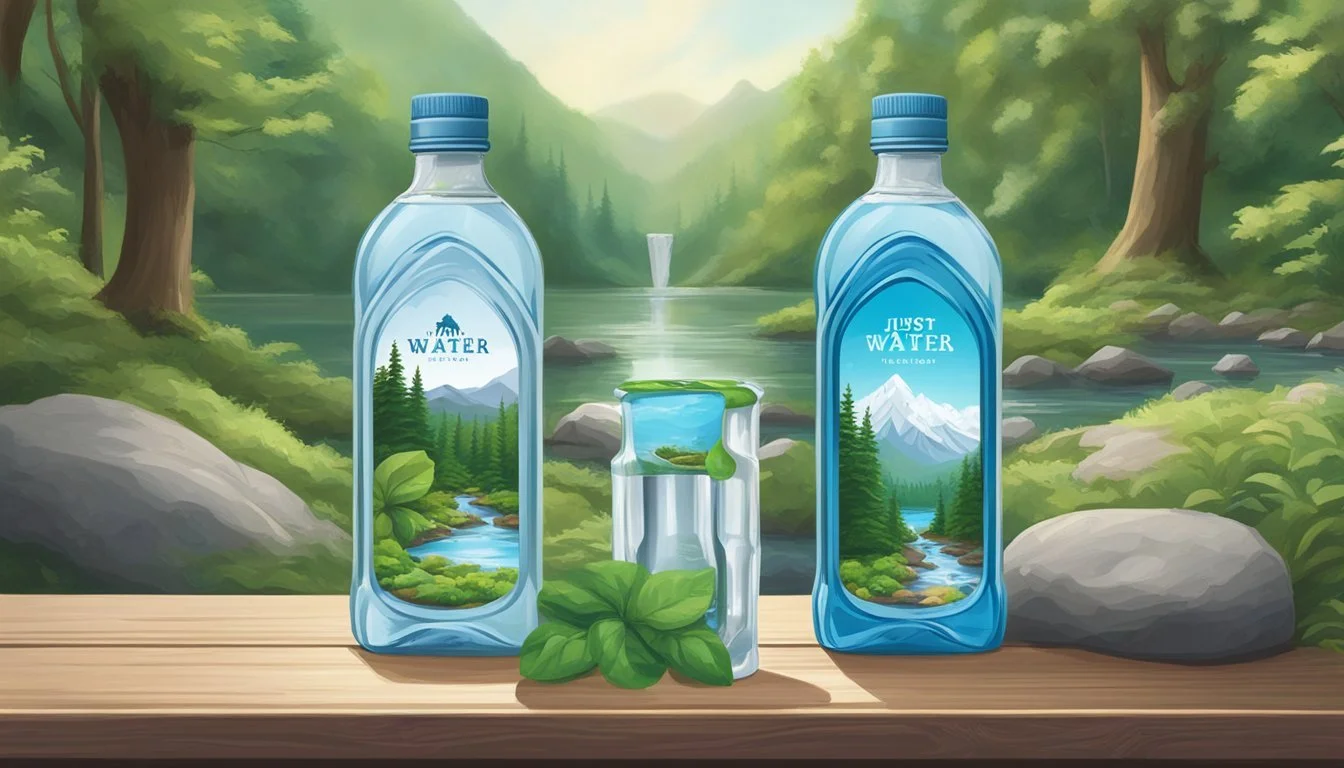Just Water vs. Castle Rock
The Ultimate Bottled Water Comparison
People often seek the purest and most refreshing bottled water to stay hydrated and healthy. Just Water and Castle Rock are two brands that have been making waves in the market. Just Water stands out for its commitment to sustainability and its appealing taste, making it a favorite among eco-conscious consumers. Castle Rock, on the other hand, prides itself on delivering natural spring water with a crisp and clean profile.
Consumers looking at these two options will notice differences not only in taste but also in their environmental impact. Just Water uses plant-based packaging, which reduces plastic waste, while Castle Rock emphasizes its sourcing from natural springs in pristine locations. Both brands cater to different preferences and priorities, whether it’s eco-friendly practices or the purity of the water source.
Choosing between Just Water and Castle Rock ultimately comes down to what the consumer values more. While Just Water is an excellent option for those prioritizing sustainability, Castle Rock offers a more traditional approach with its highly regarded natural spring water. Each brand has its strengths, ensuring there’s a perfect match for every bottled water enthusiast.
Understanding Bottled Water
Bottled water has become a popular choice due to its perceived purity and convenience. This section will cover its historical context, regulatory standards, and the different types available in the market.
History and Market Overview
Bottled water has a deep history, originating centuries ago. Early civilizations, including the Romans, valued springs and mineral waters for health.
By the late 19th century, bottling technology evolved. This allowed for commercial distribution. Modern conveniences and health consciousness have led to a surge in demand.
Today, it's a multibillion-dollar industry. Key players include Nestlé, PepsiCo, and Coca-Cola, among others.
Regulations and Standards
The quality of bottled water is regulated. In the U.S., the Environmental Protection Agency (EPA) oversees tap water, while the Food and Drug Administration (FDA) monitors bottled water.
Standards ensure safety and quality, including limits on contaminants. The Safe Drinking Water Act provides guidelines for both bottled and tap water.
Consumers can access quality reports. These include details about sources and testing results.
Types of Bottled Water
There are various types, each with unique qualities. Spring water is sourced from underground springs. It’s filtered naturally. Mineral water contains specific mineral content and comes from mineral springs.
Purified water undergoes treatment processes like distillation or reverse osmosis. It removes impurities.
Sparkling water has carbon dioxide added, creating effervescence. Alkaline water, with higher pH, is believed to offer health benefits.
Understanding these options helps consumers make informed choices. Whether concerned about taste, purity, or health, there’s a type to suit every preference.
The Brands in Question
When comparing Just Water and Castle Rock, it is essential to understand their unique characteristics, origins, and production methods. This section will provide detailed profiles for each brand to help you make an informed decision.
Profile: Just Water
Just Water is an eco-conscious brand founded by Jaden Smith. It focuses on sustainability and transparency. The water is sourced from Glens Falls, New York, and the company uses a plant-based carton which is 82% renewable.
Sustainability is a key aspect of Just Water’s identity. They aim to reduce plastic consumption by using more environmentally friendly packaging. The water is essentially spring water, processed to ensure purity and quality.
Just Water boasts a neutral pH level, making it a balanced choice for hydration. Additionally, the price point is competitive, making it accessible despite its premium features. The brand's focus on social issues resonates with many consumers.
Profile: Castle Rock
Castle Rock springs from the Oregonia wilderness in California. Known for its crisp flavor, it offers a clean and refreshing experience attributed to its natural filtration through ancient rock formations. It’s favored for its natural mineral content which enhances the taste.
Castle Rock emphasizes its sustainable practices and bottles its water in 100% recyclable materials. The brand often highlights its commitment to preserving natural resources, adding to its appeal among environmentally conscious consumers.
The branding positions Castle Rock as a premium product with a reflective focus on both quality and eco-friendliness. Its slightly higher price compared to standard bottled waters is justified by its meticulous sourcing and packaging efforts.
Source and Purification Processes
Understanding the source and purification processes of Just Water and Castle Rock is essential to evaluating their quality. Both brands emphasize purity but employ different methods and sources.
Just Water Source and Filtration
Just Water sources its water from natural springs located in the Glens Falls Watershed in Upstate New York. The water naturally undergoes filtration through bedrock layers, which helps maintain purity and enhances its mineral content.
After collection, Just Water employs ultrafiltration and UV light treatments. These processes remove impurities without using chemicals. The water is then subjected to reverse osmosis to ensure an exceptionally clean product. This meticulous combination of natural and technological filtration ensures high mineral content and purity.
Castle Rock Source and Purification
Castle Rock sources its water from the Shasta Spring. This water goes through a natural purification cycle ranging from ocean to glacier to spring. The spring water is untouched by pollutants, offering a pristine source.
Once collected, Castle Rock implements advanced engineering processes and multiple purification steps. This may include charcoal filtration and micro-filtration, adhering to FDA standards. The purified water is bottled in environmentally friendly glass, ensuring that the purity and mineral content remain intact from source to shelf.
Both brands prioritize sustainability and purity in their water sources and purification methods, ensuring premium quality for consumers.
Taste and Composition
Taste and composition are crucial factors when distinguishing between Just Water and Castle Rock. This section focuses on how these brands perform in terms of mineral content, pH levels, and overall taste.
Analyzing Mineral Content
Just Water and Castle Rock provide unique profiles of mineral content which affect taste and health benefits.
Just Water contains a balanced mix of essential minerals, including calcium, magnesium, and potassium. The presence of these minerals contributes to its clean and slightly sweet taste. Castle Rock, sourced from pristine springs, offers higher levels of calcium and magnesium, which enhance its crisp and refreshing flavor.
Here's a comparison table for clarity:
Mineral Just Water (mg/L) Castle Rock (mg/L) Calcium 47 60 Magnesium 12 20 Potassium 5 8
pH Levels and Water Quality
pH levels play a significant role in determining water quality.
Just Water has a pH level of about 8.0, making it slightly alkaline. This helps neutralize acidity in the body and offers a smooth drinking experience. Castle Rock presents a pH level around 7.5, which is closer to neutral but still slightly alkaline. Both brands ensure high water quality, free from contaminants and boast rigorous purity standards.
Brand pH Level Quality Just Water 8.0 High, slightly alkaline Castle Rock 7.5 High, near neutral
Taste Comparison
The taste of bottled water is subjective but can be compared.
Just Water is known for its clean and slightly sweet taste, thanks to its balanced mineral profile and pH level. It leaves a refreshing aftertaste without any metallic hints. Castle Rock, on the other hand, offers a crisp and clear flavor with a subtle mineral richness attributed to its higher calcium and magnesium content. Some consumers appreciate Castle Rock's more pronounced mineral taste.
In conclusion, whether one prefers the balanced sweetness of Just Water or the crisper, more mineral-rich profile of Castle Rock often comes down to personal taste preference.
Health and Safety Considerations
When comparing Just Water and Castle Rock, it’s essential to evaluate their health benefits and the risks associated with potential contaminants.
Evaluating Health Benefits
Just Water boasts environmentally friendly packaging with plant-based materials, reducing plastic usage. This can indirectly contribute to better health by limiting plastic-related pollutants. Castle Rock sources its water from pristine natural springs, touted for its high mineral content, which may offer additional health benefits.
Mineral Content is a critical aspect of health benefits. Castle Rock’s natural springs can provide essential minerals like calcium and magnesium. Just Water does not emphasize mineral content as much, but its packaging reduces exposure to harmful chemicals often found in traditional plastic bottles.
Assessing Contaminant Risks
Almost 64% of bottled water in the U.S. is essentially tap water as per studies. This raises concerns about the purity levels in both brands. Both Just Water and Castle Rock commit to rigorous testing, yet their sources differ significantly.
Castle Rock’s natural spring water may have lower contamination risks compared to municipal water sources. However, no brand is entirely free from contaminant risks. Potential microplastics in bottled waters, including Just Water’s packaging, are a universal concern. Consumers should be aware that despite stringent tests, contaminants like microplastics and trace pollutants might still be present.
To mitigate risks, disinfection processes such as UV treatment and ozone are employed. Both brands adhere to these safety standards, ensuring water safety despite potential risks.
Environmental Impact and Sustainability
This section evaluates the environmental footprint of Just Water and Castle Rock, with a focus on their bottles, packaging, water sourcing, and how these elements affect ecosystems.
Bottles and Packaging
Just Water and Castle Rock utilize different approaches to their packaging. Just Water opts for cartons made primarily from renewable resources. These cartons are 54% paper, a material significantly more sustainable than conventional plastic. Furthermore, their cap is derived from sugarcane, making most of their packaging plant-based.
Castle Rock, meanwhile, uses traditional PET plastic bottles. While PET bottles are recyclable, they often end up in landfills due to inadequate recycling practices. The production and disposal of PET bottles result in higher carbon emissions compared to the renewable materials used by Just Water.
Visual Representation:
Brand Primary Material Renewable Content Recyclability Just Water Paper, sugarcane High High Castle Rock PET Plastic Low Moderate
Water Sourcing and Ecosystem
Just Water sources its water from Glen Falls, New York, a process that includes community benefit agreements to protect local water resources. This sourcing method reduces environmental footprint by ensuring sustainable water management.
Castle Rock sources its water from natural springs in the Shasta-Trinity region of California. The extraction process can impact local ecosystems if not properly managed. This region has experienced significant debates over groundwater rights and the long-term effects of large-scale water extraction.
Responsible sourcing is vital for both companies but varies in environmental impact. Just Water's approach includes sustainable partnerships and aims to minimize ecological disruption. Castle Rock relies on natural sources but must balance extraction with ecosystem health.
Consumer Experience
When comparing Just Water and Castle Rock, consumers consider factors such as convenience and availability, brand reputation and customer trust, and packaging and user experience. Each aspect plays a critical role in determining which bottled water brand stands out.
Convenience and Availability
Just Water is widely available in various retail outlets and online platforms, making it accessible to many consumers. Its unique packaging, which includes plant-based bottles, also adds to the convenience factor.
Castle Rock, while available in select stores and through online purchasing, may not be as widely distributed as Just Water. Consumers might find it less convenient to obtain, particularly in regions where distribution is limited.
Convenience Rating:
Just Water: ⭐⭐⭐⭐
Castle Rock: ⭐⭐⭐
Brand Reputation and Customer Trust
Just Water has built a solid reputation for being environmentally conscious, using eco-friendly packaging, and sourcing water sustainably. This has earned the trust of many environmentally-aware consumers.
Castle Rock, on the other hand, emphasizes purity and quality, sourcing its water from natural springs. Although less well-known than Just Water, it has a loyal customer base that trusts its commitment to quality and purity.
Reputation and Trust Rating:
Just Water: ⭐⭐⭐⭐
Castle Rock: ⭐⭐⭐⭐
Packaging and User Experience
Just Water uses recyclable and renewable materials for its packaging, reducing the overall environmental impact. The bottles are sturdy and have a modern design that appeals to a younger, eco-conscious audience.
Castle Rock packages its water in glass bottles, which many consumers find to be premium and environmentally friendly, though less practical for on-the-go use due to weight and fragility.
Packaging Experience Rating:
Just Water: ⭐⭐⭐⭐⭐
Castle Rock: ⭐⭐⭐
Both brands offer unique benefits in terms of consumer experience, with Just Water excelling in convenience and sustainable packaging, while Castle Rock stands out for its traditional, quality-focused brand reputation.
Comparative Analysis
This section delves into the specific cost and value differences and examines competitors and alternatives. The goal is to provide clarity for consumers deciding between Just Water and Castle Rock.
Cost and Value
When comparing Just Water and Castle Rock, there are noticeable differences in pricing. Just Water offers a competitive price point with its eco-friendly packaging made primarily of paper and a sugarcane-based cap.
Castle Rock tends to position itself in the higher-end market, often reflecting its source from pristine springs. Consumers pay a premium for Castle Rock, aligning with luxury brands like Fiji Water and Evian.
From a value perspective, Just Water's emphasis on sustainability resonates with environmentally conscious buyers. Castle Rock's appeal centers on purity and premium quality, which matches that of Evian and Smartwater.
Competitors and Alternatives
Both Just Water and Castle Rock contend with various bottled water giants. Brands like Dasani and Aquafina dominate the mass market, offering affordability over specialty.
In the premium segment, Fiji Water and Essentia stand out for their specific mineral profiles and high-end branding. Evian remains a popular choice for its unique source and consistent quality.
Smartwater appeals to health-conscious consumers with its added electrolytes. For sustainability-focused buyers, Boxed Water and Flow Water provide additional eco-friendly options.
By offering these alternatives, Castle Rock and Just Water must constantly innovate and maintain quality to stand out in a crowded marketplace.
The Verdict
After analyzing various aspects of taste, origin, and overall quality, it's clear which bottled water stands out. Just Water and Castle Rock offer different experiences, but one provides a more balanced profile.
The Bottom Line
Just Water sources its water from Glens Falls, New York, and uses a sustainable approach with plant-based packaging. The taste is clean and mildly sweet, making it an excellent choice for daily hydration. Its pH level tends to neutral, appealing to those who seek a balanced option.
Castle Rock, on the other hand, comes from California’s Mount Shasta. The water is crisp and refreshing, with a hint of minerals that some may find more appealing. Packaged in glass bottles, it targets consumers looking for an eco-friendly option with a premium feel.
For those prioritizing sustainability and a neutral taste, Just Water is the way to go. For a refreshing and mineral-rich choice, Castle Rock takes the lead. Both provide distinct advantages, yet meet varying consumer preferences effectively.
More About Just Water
Core Hydration vs Just Water: Which Bottled Water is Better?
Icelandic Glacial vs Just Water: Which Bottled Water is Better?
Just Water vs Aqua Carpatica: Which Bottled Water is Better?
Just Water vs Cascade Mountain: Which Bottled Water is Better?
Just Water vs Crystal Geyser: Which Bottled Water is Better?
Just Water vs Hawaii Volcanic: Which Bottled Water is Better?
Just Water vs Hawaiian Springs: Which Bottled Water is Better?
Just Water vs Kirkland Signature: Which Bottled Water is Better?
Just Water vs Mountain Valley Spring Water: Which Bottled Water is Better?
Just Water vs Nestle Pure Life: Which Bottled Water is Better?
Just Water vs Richard's Rainwater: Which Bottled Water is Better?
Just Water vs San Pellegrino: Which Bottled Water is Better?
Just Water vs Solan de Cabras: Which Bottled Water is Better?
Just Water vs Talking Rain AQA: Which Bottled Water is Better?
Just Water vs Whole Foods 365: Which Bottled Water is Better?
Just Water vs Whole Foods Italian Still Mineral water: Which Bottled Water is Better?
More About Castle Rock
Aqua Carpatica vs Castle Rock: Which Bottled Water is Better?
Castle Rock vs Cascade Mountain: Which Bottled Water is Better?
Castle Rock vs Crystal Geyser: Which Bottled Water is Better?
Castle Rock vs Hawaii Volcanic: Which Bottled Water is Better?
Castle Rock vs Hawaiian Springs: Which Bottled Water is Better?
Castle Rock vs Kirkland Signature: Which Bottled Water is Better?
Castle Rock vs Purely Sedona: Which Bottled Water is Better?
Castle Rock vs Richard's Rainwater: Which Bottled Water is Better?
Castle Rock vs Solan de Cabras: Which Bottled Water is Better?
Castle Rock vs Talking Rain AQA: Which Bottled Water is Better?
Castle Rock vs Whole Foods 365: Which Bottled Water is Better?
Castle Rock vs Whole Foods Italian Still Mineral water: Which Bottled Water is Better?
Core Hydration vs Castle Rock: Which Bottled Water is Better?
Icelandic Glacial vs Castle Rock: Which Bottled Water is Better?
Mountain Valley Spring Water vs Castle Rock: Which Bottled Water is Better?
Nestle Pure Life vs Castle Rock: Which Bottled Water is Better?
Poland Spring vs Castle Rock: Which Bottled Water is Better?
San Pellegrino vs Castle Rock: Which Bottled Water is Better?





